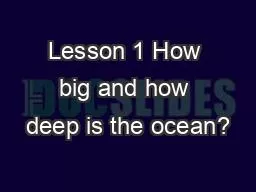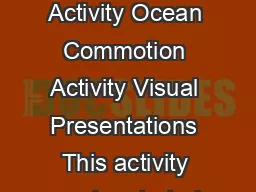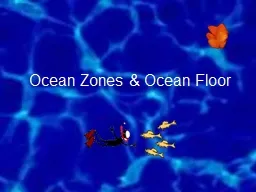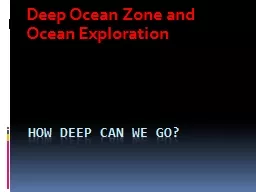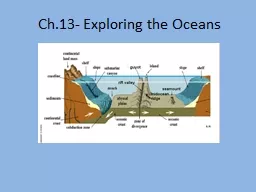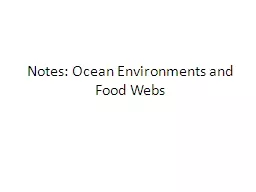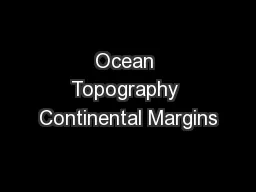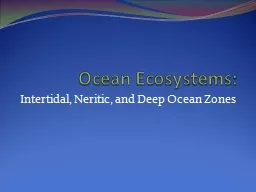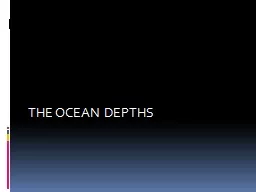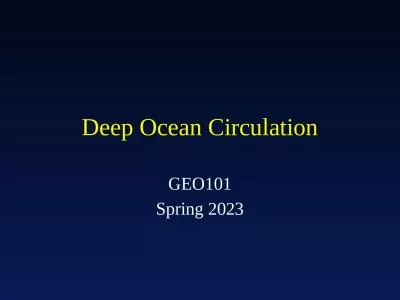PPT-Lesson 1 How big and how deep is the ocean?
Author : eatsyouc | Published Date : 2020-08-27
Submarine STEM Science Ages 711 Lesson 1 How big and how deep is the ocean Nekton Mission II The Indian Ocean VIEW VIDEO Lesson 1 How big and how deep is the
Presentation Embed Code
Download Presentation
Download Presentation The PPT/PDF document "Lesson 1 How big and how deep is the oce..." is the property of its rightful owner. Permission is granted to download and print the materials on this website for personal, non-commercial use only, and to display it on your personal computer provided you do not modify the materials and that you retain all copyright notices contained in the materials. By downloading content from our website, you accept the terms of this agreement.
Lesson 1 How big and how deep is the ocean?: Transcript
Download Rules Of Document
"Lesson 1 How big and how deep is the ocean?"The content belongs to its owner. You may download and print it for personal use, without modification, and keep all copyright notices. By downloading, you agree to these terms.
Related Documents

